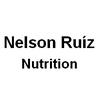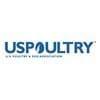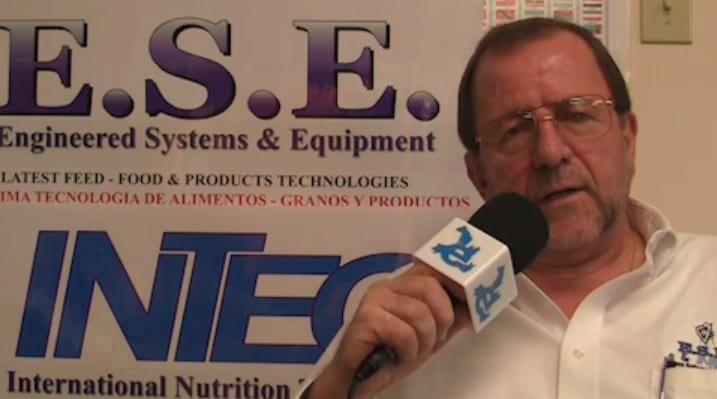Check out what is new in Animal Feed
Find the best technical articles, forums, and videos on Animal Feed at Engormix. Enter now and interact with the world's largest agricultural social network.
.jpg&w=3840&q=75)
Nelson Ruiz (Nelson Ruiz Nutrition LLC) explains how to deal with both cases and offers his insights and recommendations, in this Engormix interview during IPPE 2024 in Atlanta, USA....
Comments : 0
Recommendations: 0
Nelson Ruiz (Nelson Ruiz Nutrition LLC) A set of 24 solvent extracted commercial soybean meal (CSBM) samples, which corresponded to the same lots of CSBM used in the field, were evaluated. The CSBM were from different origins (Argentina, Bolivia, Paraguay, Trinidad & Tobago, U.S.). The objective herein was to evaluate the relationship between KOH protein solubility (KOHPS, a measurement of overprocessing) and trypsin inhibitor activity (TIA, a...
Comments : 8
Recommendations: 5
.jpg&w=3840&q=75)

Utilization of Food Waste Ingredients for Feed
Suggested link
.jpg&w=3840&q=75)
Gwen Venable (IPPE Executive Vice President - Expo & Communication Services) talks about the success of the IPPE 2024 in Atlanta, and shares the dates for next year's edition: Jan. 28-30, 2025....
Comments : 0
Recommendations: 0
.jpg&w=3840&q=75)
Mike Gauss (Kent Nutrition Group) offers insights into achieving ESG goals while staying true to your company's core values, in this interview during IPPE 2024 in Atlanta, USA....
Comments : 0
Recommendations: 0
.jpg&w=3840&q=75)
Dr. Markus Wiltafsky-Martin, Director of Service Commercialization at Evonik Animal Nutrition, explains what NIR is, how it operates, and demonstrates how AMINONIR® swiftly and accurately determines the nutritional quality of your feeds and raw materials – ensuring fast, reliable results of the highest quality.
...
Comments : 0
Recommendations: 4
.jpg&w=3840&q=75)
Joshua Jendza (Qualitech) talks about avoiding pathogen growth while providing iron to the bird, and how iron works against Salmonella and other bacteria, during this Engormix interview....
Comments : 0
Recommendations: 2
.jpg&w=3840&q=75)

Utilization of Food Waste Ingredients for Feed
Suggested link
I. INTRODUCTION Nutrient requirements are established by means of dose-response studies. Data is subjected to appropriate regression analysis and the level needed to maximise a given response (body weight gain, feed efficiency, carcass yield, etc.,) is defined as ‘requirement’. The estimates are compiled as ‘tables of nutrient requirement’ e.g., NRC, CVB, Brazilian Tables, nutrition guides by the genetic suppliers, and are used by field nutritionists as...
Comments : 2
Recommendations: 1
I. INTRODUCTION In the 1990s, researchers from the American Soybean Association (ASA) showed that soybean meal with similar proximate analysis can perform very differently in poultry and swine feeding. Subsequently, Creswell and Swick (2008) carried out feeding trials, AME and digestible amino acid analysis of 4 soybean meals. They found that there was a large difference between the soybean meals in BWG and FCR from the broiler feeding trials as well as in AME and digestible lysine....
Comments : 1
Recommendations: 4
I. INTRODUCTION Feeding the world’s projected burgeoning human population increase of 2.2 billion people by 2050 will place tremendous pressure on food security. The poultry industry is innovative and well positioned to address this problem through increased efficiency and waste reduction. Globally, 32% (by weight) of produced food − equivalent to 1.3 billion tons − is lost or wasted every year. Conversion of food waste into raw materials for production of poultry...
Comments : 0
Recommendations: 0
I. INTRODUCTION In Australia, the cost of tallow and vegetable oil has more than doubled over the past two years (www.finvis.com), prompting broiler nutritionists to re-evaluate dietary energy content for meat-type chickens. Globally, a wide range of lipids with diverse chemical composition, are routinely included in poultry feed including soapstocks or acid oil, crude vegetable oil, hydrogenated material, recycled vegetable oil, restaurant grease, animal tallows and even products...
Comments : 1
Recommendations: 3
.jpg&w=3840&q=75)

Utilization of Food Waste Ingredients for Feed
Suggested link
I. INTRODUCTION The quality of poultry feed and litter are important for maintaining and improving poultry production. Poultry feed (raw materials and formulated diet) is highly variable and large safety margins are needed to buffer the nutritional variability in feed ingredients when formulating diets (Moss et al., 2021). Feed ingredients delivered to feed mills are not comprehensively analysed using current methods (i.e., wet-chemistry and NIR). This is because the large quantities...
Comments : 0
Recommendations: 1
INTRODUCTION Fusarium verticillioides has long been known to be a causal agent of maize ear rot but has received more attention since the discovery that fumonisins, the mycotoxins it produces, can accumulate in maize kernels (Gelderblom et al., 1988). Fumonisin consumption can lead to serious disorders in humans and animals; for example, leukoencephalomalacia in horses and pulmonary edema in swine, both are accompanied by injuries to the liver and heart; hepatic necrosis and,...
Comments : 0
Recommendations: 0
1. Introduction Mycotoxins are naturally occurring secondary metabolites produced by various genera of molds, such as Aspergillus, Fusarium, Penicillium, and Alternaria. About 400 mycotoxins have been identified, with some of the most important ones being aflatoxins B1 (AFB1), aflatoxin B2 (AFB2), Ochratoxin (OTA), and deoxynivalenol (DON) [1]. The consumption of mycotoxin-contaminated foods can have serious health consequences, being potentially fatal, depending on the specific...
Comments : 0
Recommendations: 0
INTRODUCTION Listeria monocytogenes is a Gram-positive, facultative anaerobe that is the causative agent of listeriosis (Gudbjörnsdóttir et al., 2004). They are considered saprophytic organisms with the capability to adapt to an ever-changing environment because they possess multiple stress response mechanisms to overcome varying temperatures, salt concentrations and pH (Berrang et al., 2000; Milillo et al., 2012a; Giaouris et al., 2015; Saldivar et al., 2018). Listeria...
Comments : 0
Recommendations: 0
.jpg&w=3840&q=75)

Utilization of Food Waste Ingredients for Feed
Suggested link
I. Introduction Immediately after birth, or hatch in birds, the initial inoculum shapes the gut microbiota for life. The first bacteria to settle in the intestine can attach to epithelial cells with no competition, rapidly establish, grow, and set the intestinal environment to suit their own needs (Stecher and Hardt, 2011; Edwards, 2017). The first bacterial settlers have the most substantial influence on developing the host's immune system and overall ability to thrive (Stecher...
Comments : 1
Recommendations: 0
1 Introduction Mycotoxins are toxic metabolites produced by fungi. The fungi grow on food commodities such as cereals, coffee, fruits, nuts, oilseeds, and spices when there are favorable conditions (Awuchi et al., 2021). Currently, over 400 mycotoxins have been recorded, and 25% of food has been shown to be contaminated. (Tola and Kebede, 2016; Escrivá et al., 2017); however, only a few are of concern from a food safety perspective: Aflatoxins (AFs), Fumonisins (FBs),...
Comments : 0
Recommendations: 0
INTRODUCTION Mycotoxins are secondary metabolites that are produced by microfungi which are capable of causing disease and death in humans and other animals (Bennett and Klich, 2003). According to a risk assessment overview provided by the European Food Safety Authority (EFSA) (EFSA CONTAM Panel) related to the main contaminants in food and feed, mycotoxins represented 15% of the overall risk for human and animal health, for the period between 2003 and 2012 (EFSA,...
Comments : 0
Recommendations: 0
INTRODUCTION Fusarium head blight (FHB) is one of the major economically important fungal diseases in wheat, barley, corn, and other small grains worldwide. Wheat yield losses of up to 50% have been reported in North America due to FHB (McMullen et al., 1997; Goswami and Kistler, 2005). One of the major concerns of FHB is the contamination of infected grains with Fusarium mycotoxins. Fusarium mycotoxins represent the largest group of mycotoxins, which contains more than 140 known...
Comments : 0
Recommendations: 0
.jpg&w=3840&q=75)

Utilization of Food Waste Ingredients for Feed
Suggested link
INTRODUCTION Mycotoxins are toxic secondary metabolites produced by filamentous fungi on agricultural products, which cause acute or chronic toxic effects in farm animals and humans called mycotoxicosis (Schirone et al., 2016; Du et al., 2017). The contamination of agricultural products with fungi occurs during pre-and post-harvesting stages due to inappropriate and unhygienic practices (Bernhoft et al., 2012). The Food and Agricultural Organization (FAO) of the United Nations...
Comments : 0
Recommendations: 0




.jpg&w=3840&q=75)





















